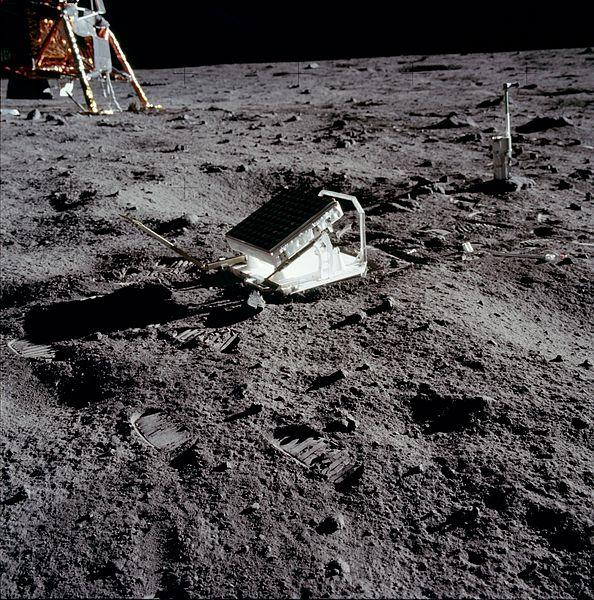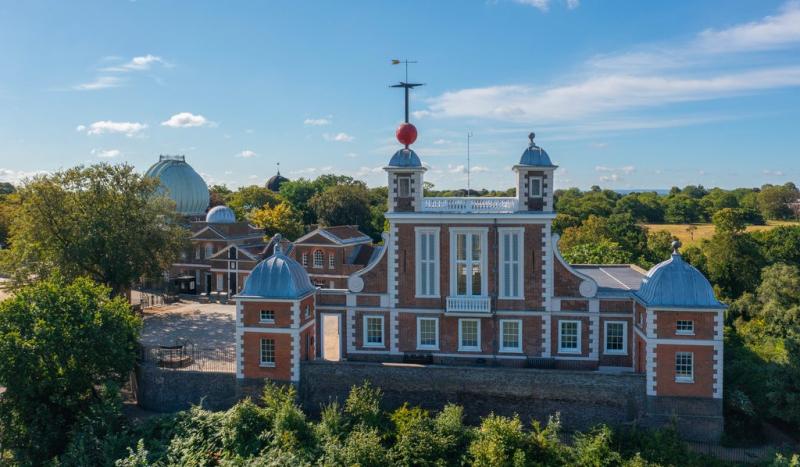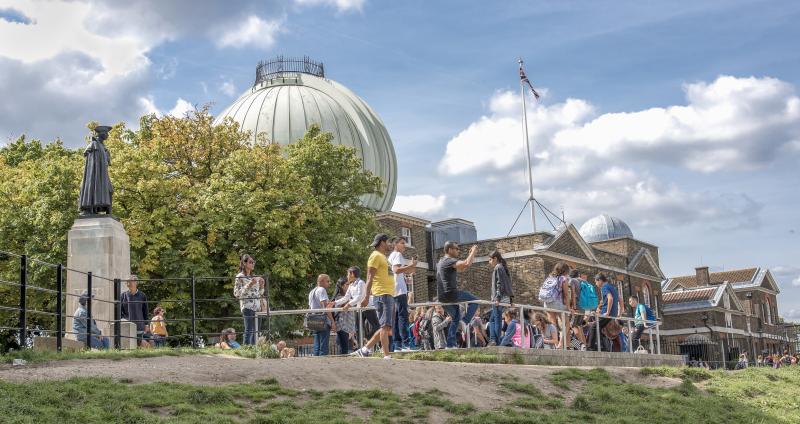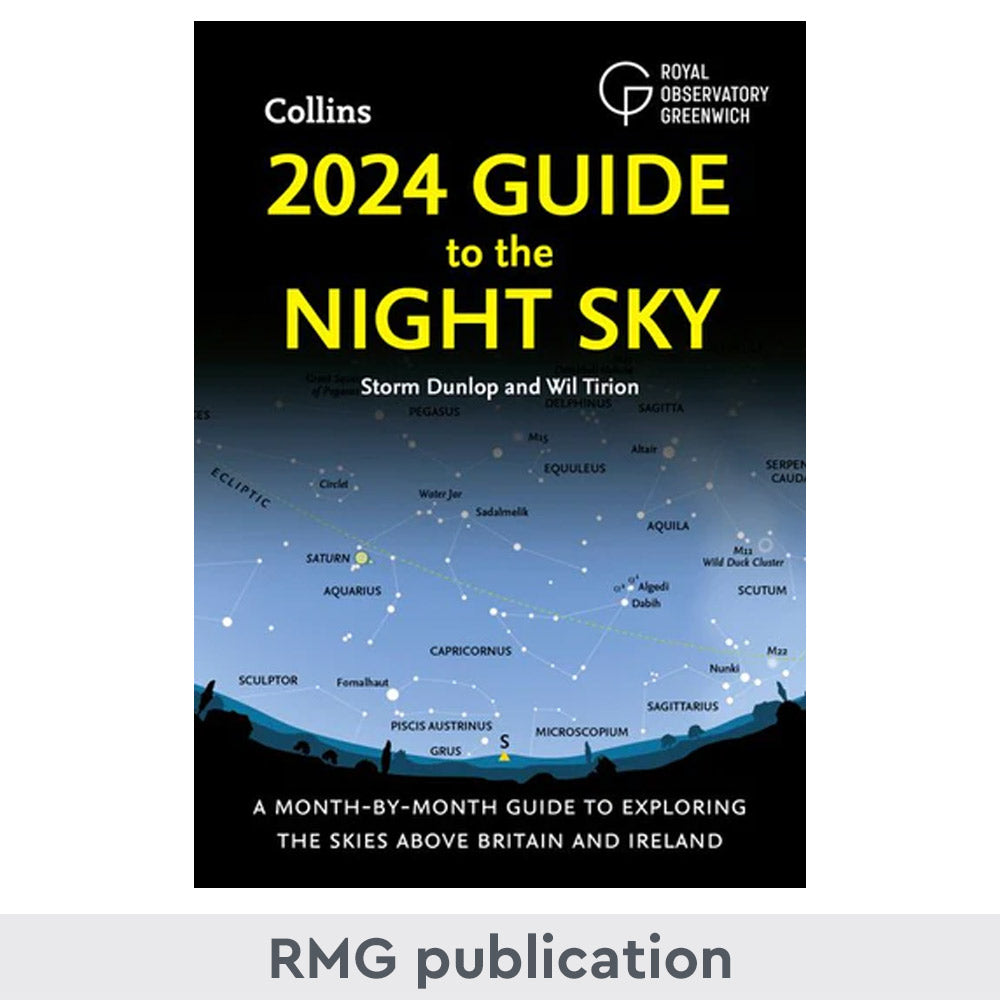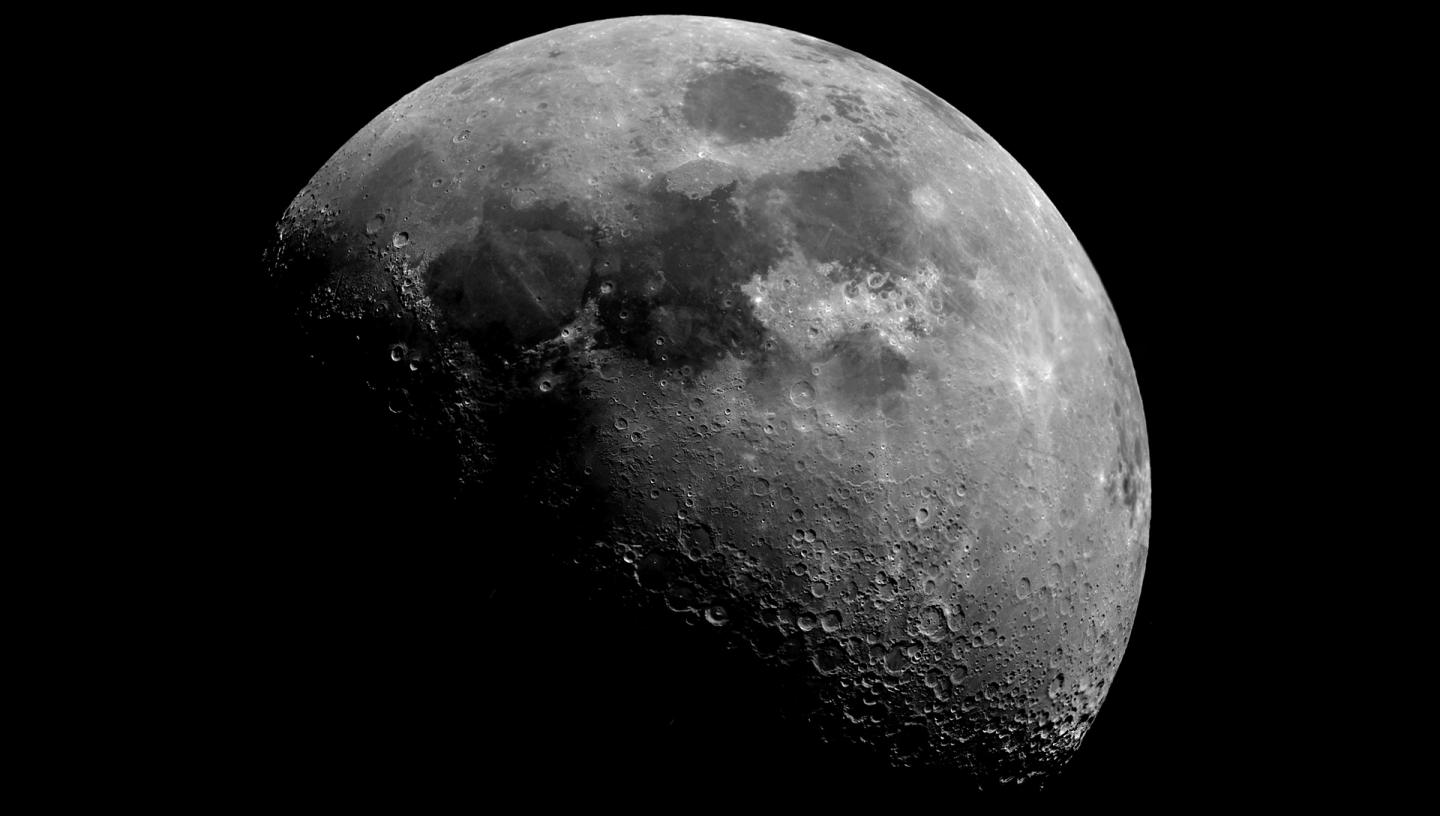
The Moon is the most recognisable object in the night sky, and has an enormous impact on life here on Earth. But what is the exact distance between the Earth and the Moon? And why is that question not as simple as it sounds? Royal Observatory astronomer Affelia Wibisono explains all...
How far away is the Moon from the Earth?
The average distance between the Earth and the Moon is 384 400 km (238 855 miles).
How far is that in light-seconds?
Light travels at 300,000 kilometres per second, so it takes about 1.3 seconds for light to travel from the Moon back to the Earth. In other words, the Moon is 1.3 light-seconds away from the Earth.
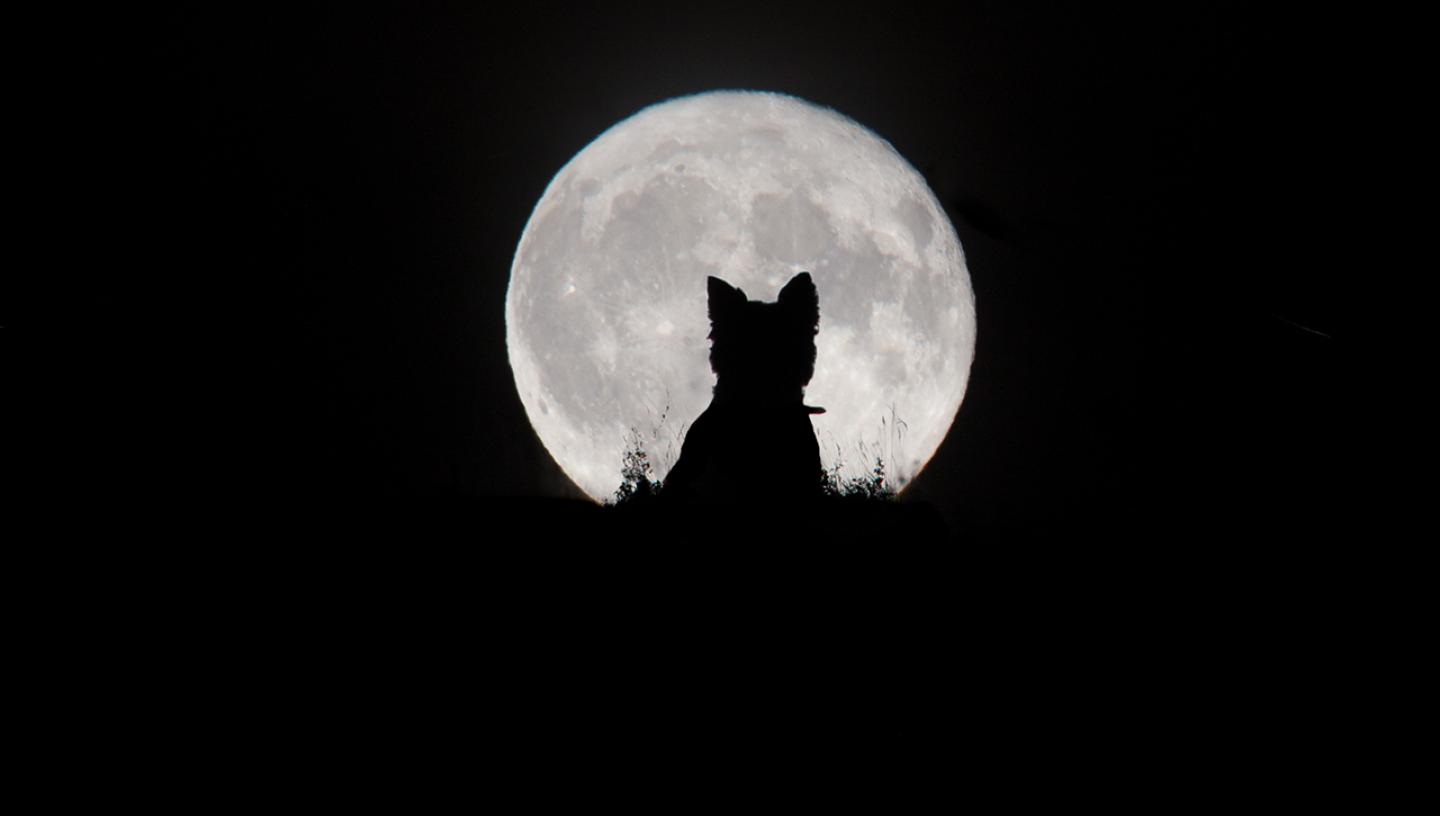
Visit the Insight Investment Astronomy Photographer of the Year exhibition
What is a light year?
The Moon's elliptical orbit
No orbit is perfectly circular. Some are very close, but they are all at least slightly elliptical in shape. Astronomers can measure how near to a perfect circle an orbit is by calculating its 'eccentricity'.
This is expressed by a number that is between 0 and 1. The closer the eccentricity is to 0, the closer the orbit is to a circle. In fact, a circle can be thought of as a special kind of ellipse that has an eccentricity of 0.
Venus’ orbit is the least eccentric out of all of the planets in our Solar System and closest to a circle, with a value of 0.007. Mercury’s is the most eccentric with a value of 0.2.
The eccentricity of the Moon’s orbit is 0.05. Furthermore, the Earth is not at the very centre of the Moon’s orbit either. It is located at one of the foci of the Moon’s elliptical orbit, so is closer to one edge of the orbit than the other.
Apogee, perigee and average distance - the distance to the Moon explained
Astronomers tend to talk about three different numbers when talking about the distance between the Earth and the Moon.
At its furthest point from the Earth, the Moon is about 405 696 km (252 088 miles) away and astronomers say that the Moon is at apogee (‘apo’ means ‘away’).
On the other hand, when the Moon is at perigee (‘peri’ means ‘near’), the Moon is at its closest approach to the Earth. The distance between them is only 363 104 km (225 623 miles).
These two figures differ by 42 592 km (26 465 miles) - more than three times larger than the diameter of the Earth! The average distance between the Earth and the Moon is 384 400 km (238 855 miles).
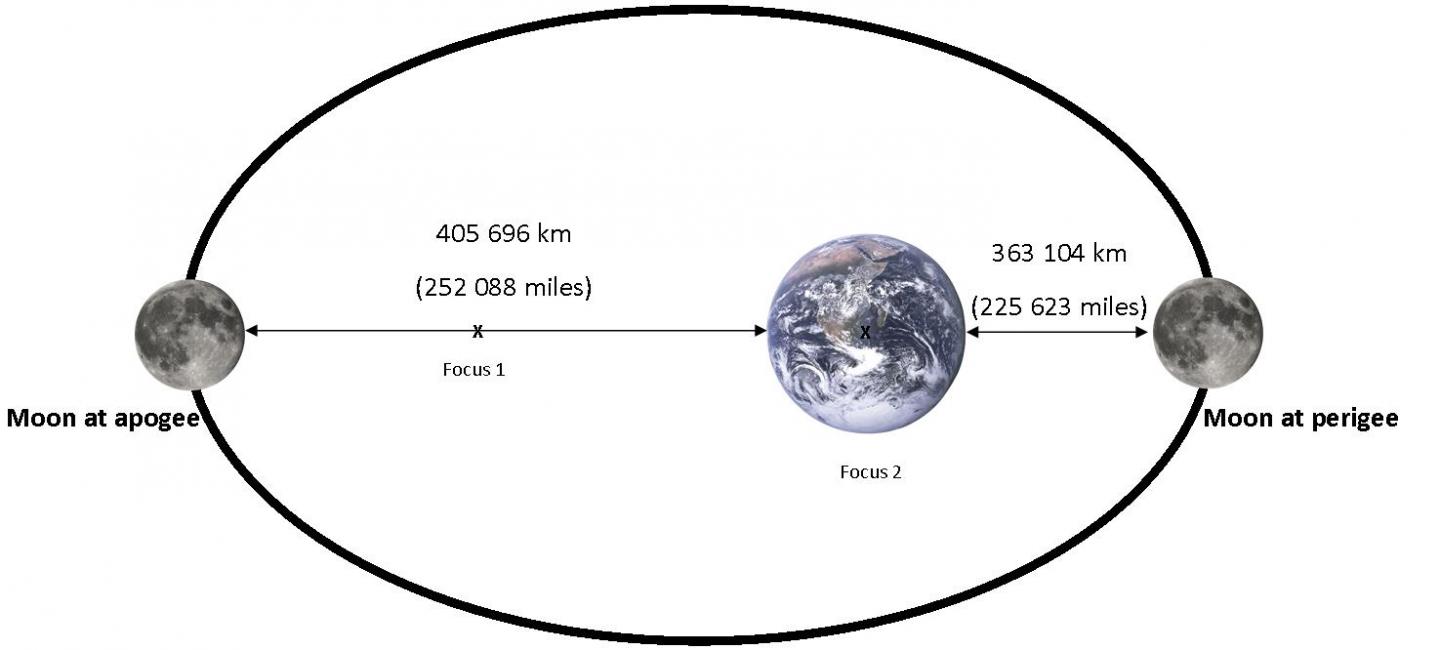
The Moon’s elliptical orbit with the distances at apogee and perigee. Note that the Earth is not at the very centre of the orbit and that the eccentricity of the orbit has been exaggerated here! Credit: NASA/Luc Viator/Affelia Wibisono.
The supermoon and micromoon
But do the two distances affect us in any way? Not really. The full Moon will look slightly bigger if it occurs during perigee (sometimes called a supermoon) and slightly smaller at apogee (a micromoon). However, the difference won’t be easily noticeable to the naked eye and a side by side photographic comparison is the only way to really see it.
Find out more about supermoons
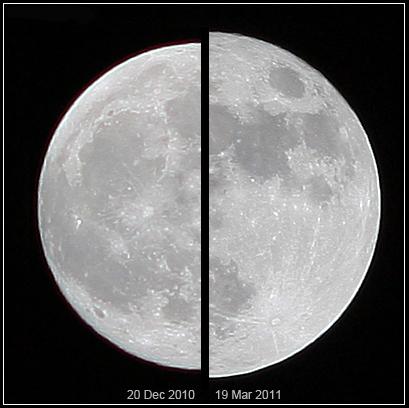
Comparison between a micromoon and a supermoon. Supermoons appear to be 14% larger and 30% brighter than a micromoon. Credit: Marcoaliaslama.
How does the Moon affect the tides?
Our tides are caused by the gravitational pull of the Moon and the Sun and the Earth’s rotation. High tides are highest and low tides are lowest when it is a full moon or a new moon because of the gravitational pull of our natural satellite and star add up. These tides are called spring tides, as the tides spring out and spring back, they do not have anything to do with the spring season. At perigee, the Moon’s gravitational pull will be slightly stronger than usual and so the difference between high and low tides would be larger – but only by about 5cm! Similarly, when the Moon is at apogee, the difference between high and low tides will only be about 5cm smaller than usual.
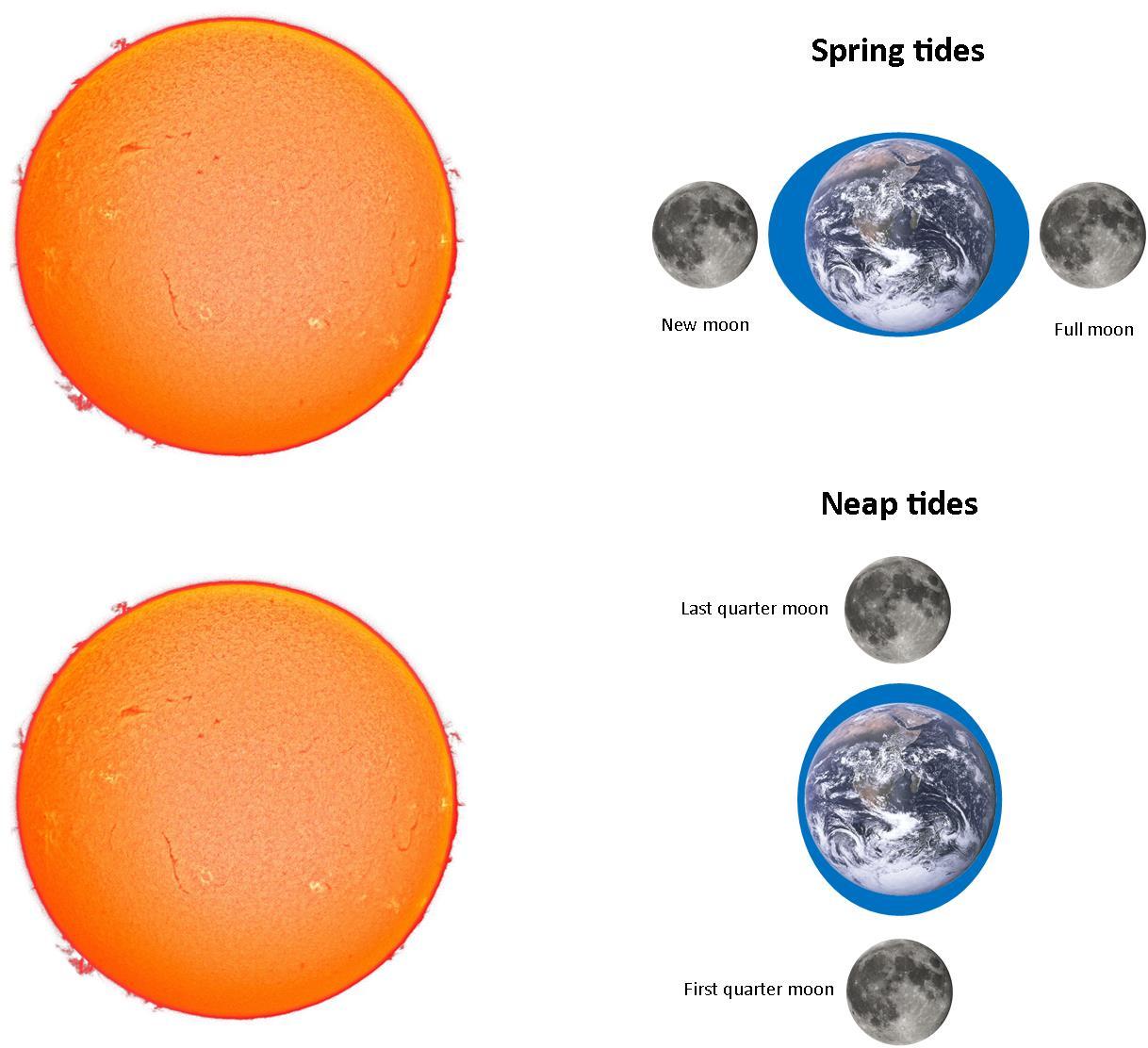
The biggest tides occur when the Sun, Moon and Earth align because the gravitational pull of the Sun and Moon combine. Neap tides are smaller and occur when the Sun and Moon are perpendicular to each other. Credit: NASA/Luc Viator/HalloweenNight/Affelia Wibisono.
How far is the Moon from the sun?
Since the Moon orbits the Earth and the Earth orbits the Sun, both the Moon and the Earth are the same average distance away from the Sun. On average, the Earth and Moon are about 150 million kilometres (or 93 million miles) from the Sun!
That distance is so large that it takes light eight minutes to reach us (remember that light travels at 300,000 kilometres per second). That means that if the Sun were to stop shining right now, we wouldn’t know for another eight minutes.
How long does it take to get to the Moon from the Earth?
On average it would take three days, but it depends on how fast you are travelling and the exact route you take. It also depends on what you want to do – passing by the Moon does not require you to slow down to enter its orbit, minimising the time it would take to get there.
8 hours and 35 minutes
The record for the shortest journey time to the Moon is currently held by the New Horizons spacecraft with a time of 8 hours and 35 minutes.
1 day 10 hours
The first spacecraft to attempt to reach the Moon was the Soviet Union's Luna 1 in 1959. Unfortunately, it did not slow down enough to complete its mission, but it did reach the vicinity of the Moon within 34 hours (1 day 10 hours).
13.5 months
SMART 1, a European Space Agency spacecraft powered by an ion engine, was launched in 2003. It was very fuel efficient but did take 13.5 months to complete its journey!
How long did it take the Apollo missions to reach the Moon?
Human space travel will usually take longer than robotic ones. On average, the nine crewed missions to the Moon, (including Apollo 8, Apollo 10, Apollo 13 and the six that landed on the surface) took just over 78 hours (3 days 6 hours) to enter lunar orbit. The quickest was Apollo 8 which took 2 days, 21 hours and 8 minutes, while Apollo 17 took the longest with a time of 3 days, 14 hours and 41 minutes (times include the time spent in Earth orbit).
How long would it take to drive to the moon?
If you were driving at a speed of 40mph it would take approximately 5,791.375 hours to get to the Moon. However, this depends on whether the Moon is in apogee or perigee - and what kind of rocket car you have of course.
How long does it take the Moon to orbit the Earth?
The lunar phase cycle takes 29.5 days to complete, and is directly connected to the orbit of the Moon around the Earth. However this is not how long it takes for one orbit to complete. Instead the Moon takes 27.3 days to orbit the Earth once.
This difference comes from how you measure the motions of objects in space. As there are no truly fixed points in space to measure against, you are forced to use objects that are considered not to move to within a reasonable level of uncertainty.
Very distant stars and galaxies, while all technically in motion, don’t noticeably move in the sky on human timescales. Therefore they can be considered fixed.
If you measure how the Moon orbits compared to these distant stars you get 27.3 days, the true orbital period of the Moon. However, the phases of the Moon are dependent on how the Moon, Earth and Sun are placed. During the time the Moon orbits the Earth, the Earth has moved on in its orbit around the Sun. In effect, the Moon needs a couple of extra days to catch up and return to the same point in space relative to the Sun. Hence the 29.5 day lunar phase cycle.
How long is a day on the Moon?
You may have noticed that the full Moon always looks about the same. You always see the same pattern of craters, hills, valleys and mare (seas) on the full Moon. In fact if you look at any phase of the Moon, it will always show the same features, though not all of the features will be lit up.
This is because the Moon spins at the same rate as it orbits around the Earth, with the exception of a couple of minor wobbles (known as libration) that brings a little more of the Moon into view. This means we only ever see the near side of the Moon from Earth, and never the far side. This is sometimes known as the “dark side” of the Moon - not because it actually is dark, but because it was mysterious and unknown until humans explored it.
The result is a very slowly rotating Moon: it takes 29.5 days to go from midday to midday on the Moon. Daylight lasts about two weeks and night time another two weeks. That, coupled with the lack of an atmosphere on the Moon, means the temperature changes wildly from over 100°C during the day to around -150°C at night.
Is the Moon moving away from the Earth?
Astronomers have discovered that the Moon is currently moving away from the Earth by 3.8 cm every year!
Astronauts from the Apollo 11, 14 and 15 missions and the two Soviet Union rovers, Lunokhod 1 and Lunokhod 2, left a total of five mirrors on the surface of the Moon. Astronomers on Earth can reflect laser beams off these mirrors and record the time it takes for the laser to return. We know how fast the laser beam is travelling (the speed of light) so we can easily calculate the distance that the laser beam has travelled. The Earth-Moon distance would then be half of this value.
This would mean that in the far future, total solar eclipses would be a thing of the past as the Moon will appear to be smaller: therefore, its disc will not be large enough to completely obscure the Sun. It will eventually stop receding from the Earth in about 50 billion years’ time according to theory. However, the Sun would have already entered the next stage of its life long before that happens. As it expands into a red giant star in 5 billion years or so, it will push the Moon back towards the Earth causing it to disintegrate due to strong tidal forces.
This article has been written by an astronomer at the Royal Observatory, Greenwich
01/06/2018: Affelia Wibisono
